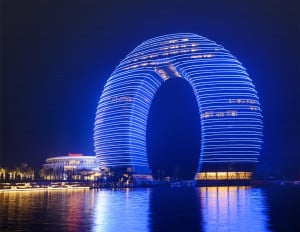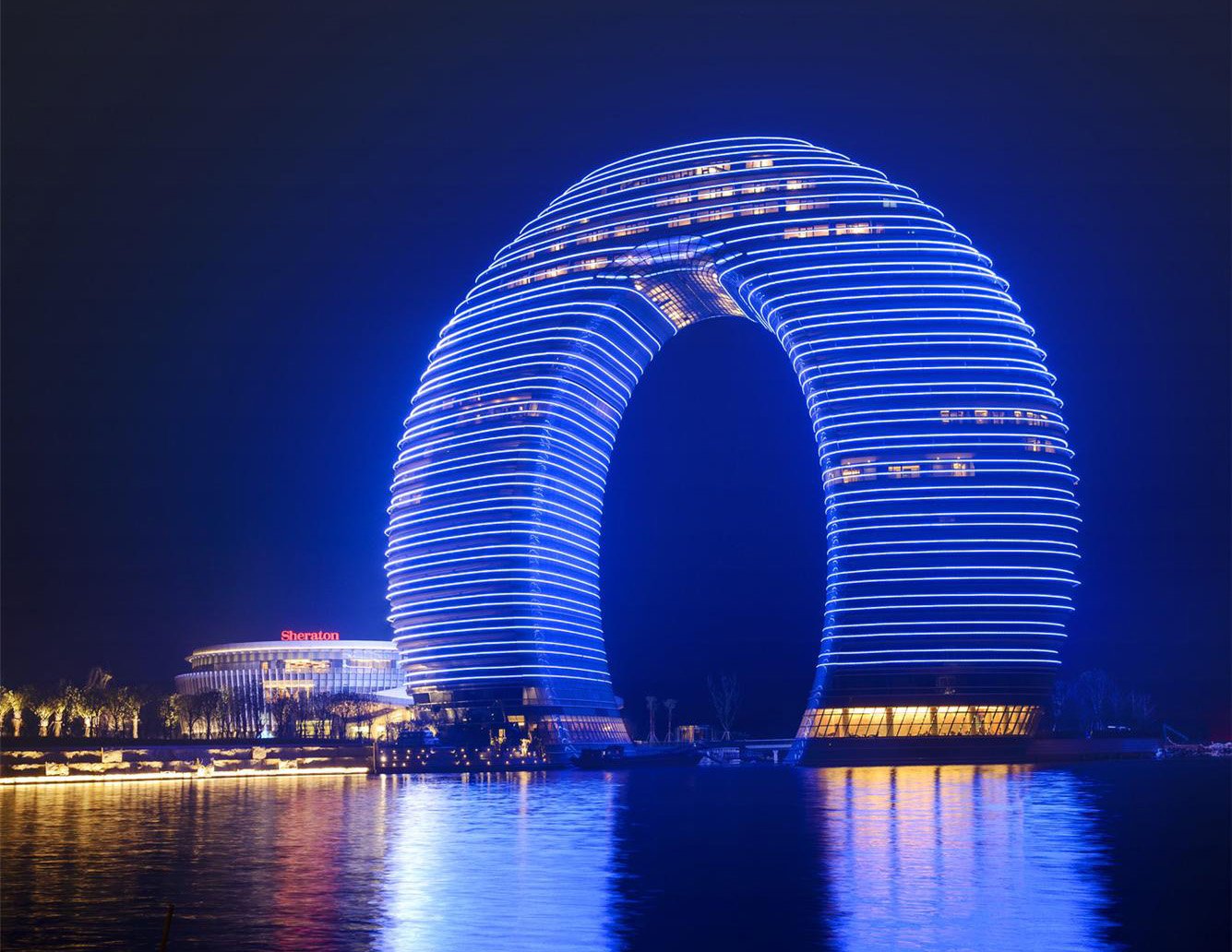Recently, we posted a blog on novelty architecture, which is classified as buildings that are unusually shaped to deliberately draw attention, typically for the purpose of advertising. The topic caught our attention after the completion of Taiwan’s giant glass high heel worship center, which could definitely be clumped into the “weird architecture” category. It was intentionally designed with a feminine appeal in the hopes that it would become a conversation piece and draw women to host their wedding ceremonies onsite.
Growing Trend Toward “Weird Architecture”
 Weird, over-sized, dramatic architecture isn’t isolated to Taiwan, however. While examples can be found right here in the United States, China has been at the forefront of building it bigger and better with its glass walkways, doughnut-shaped Sheraton hotel and internationally recognized Bird’s Nest, aka Beijing National Stadium, from the 2008 Olympics. While the Bird’s Nest is still a popular tourist attraction, it has been met with criticism because of its high cost to maintain ($11 million a year) and lack of profit-generating events. In addition, China is home to the CCTV Headquarters building, nicknamed locally as “big pants” and several copycat buildings, including more than ten White Houses and even an Eiffel Tower.
Weird, over-sized, dramatic architecture isn’t isolated to Taiwan, however. While examples can be found right here in the United States, China has been at the forefront of building it bigger and better with its glass walkways, doughnut-shaped Sheraton hotel and internationally recognized Bird’s Nest, aka Beijing National Stadium, from the 2008 Olympics. While the Bird’s Nest is still a popular tourist attraction, it has been met with criticism because of its high cost to maintain ($11 million a year) and lack of profit-generating events. In addition, China is home to the CCTV Headquarters building, nicknamed locally as “big pants” and several copycat buildings, including more than ten White Houses and even an Eiffel Tower.
It is these very examples of “weird architecture,” among others, that has pushed the State Council in China to put a halt to such creativity, banning outlandish architecture “that lacks cultural tradition.” They have even put a restriction on gated communities stating that they will be opened up to better streamline traffic flow.
Evolution of Chinese Architecture
Chinese architecture has definitely evolved over the years. Classical Chinese architecture is characterized by balance with the entryway centered and symmetrical wings. There is less emphasis on height, focusing instead on the visual width of a structure with over-sized roofs and platforms, downplaying the vertical walls. Modern examples of Chinese architecture, however, are more abstract and built on a much larger scale with a trend toward form over function.
While the idea of architecture that is “suitable, economic, green and pleasing to the eye,” sounds reasonable, many of these terms are subjective leaving the future of Chinese architecture somewhat questionable.
NEXT STEPS
- Sign up for our newsletter to stay up-to-date with the latest industry news
- Follow us on Twitter, Facebook or LinkedIn
- Download our Ultimate Guide to Bulletproof Glass and Bullet Resistant Barriers infographic
Photo courtesy of city.0932.ru

